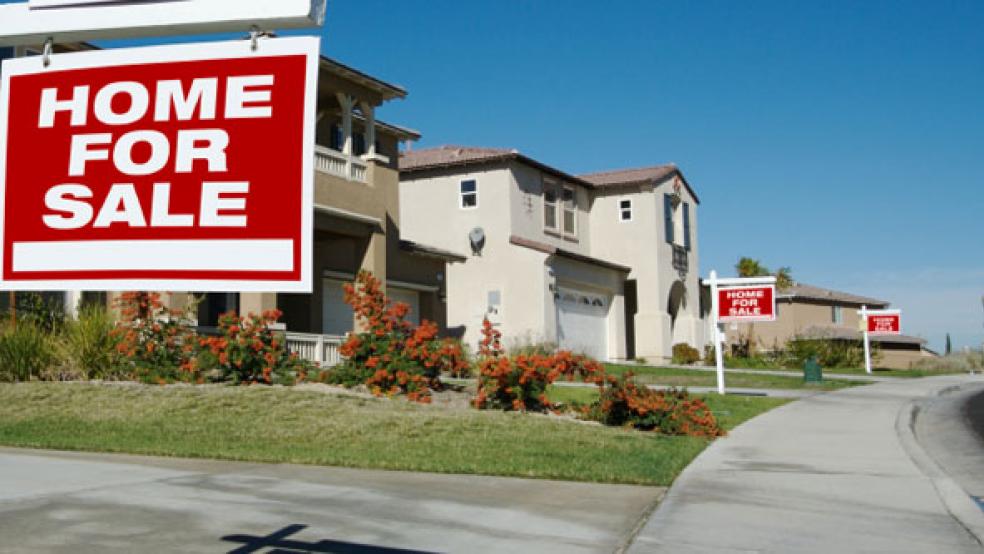As housing analysts start to worry about the sustainability of the recent run-up in the real estate market, a troubling trend has returned, harking back to the days of the housing bubble: house flipping.
In the first half of 2013, home flipping – buying and selling a home (in the hopes of turning a profit) inside of six months – increased 19 percent over the same period last year, and it increased 74 percent over the first half of 2011, according to a report by RealtyTrac.
The improving housing market has upped the potential for quick profits: Home flippers made an average gross profit of $18,400 on single-family home flips, representing a 9 percent return on the initial purchase prices, the report found. That’s up 246 percent from the average gross return in the first half of 2012. The Atlanta area led the country in flipping activity, with nearly 6,000 properties flipped, followed by New York, Phoenix and Detroit. The amount of flipping activity increased in nearly 70 percent of metro areas.
When housing bottomed out a few years ago, most of the flippers were institutional investors who snapped up thousands of foreclosed homes for cash at rock-bottom prices before rehabbing them for resale. That kind of flipping probably helped the real estate recovery, as investors were able to soak up the excess inventory that plagued the market and put a floor on falling prices. But the fire-sale prices that first attracted institutional investors have largely disappeared.
RELATED: REAL ESTATE GONE WILD – BUY IT AND FLIP IT
Now that a housing recovery is in progress, more traditional buyers are trying to get in on the action, seeking investment returns beyond what they can find in the stock market. “With home prices appreciating as quickly as they are, that’s going to attract more of your mom-and-pop type investors who maybe don’t do this full-time, or hobby investors,” says RealtyTrac vice president Daren Blomquist.
In Daytona Beach, Fla., for example, more than 90 percent of the more than 1,000 homes flipped last year were flipped by sellers who only flipped one home, according to RealtyTrac data. Flippers there took home an average gross profit of more than $50,000.
“We’re in the early innings, but more people are getting back into flipping as they look at potential returns,” says Philadelphia realtor Chris Somers. “But there is more risk when non-professionals are involved.”
HEADWINDS FOR FLIPPERS
Buying and flipping homes is not as quick and easy as it may look on reality TV. Somers says mom-and-pop investors face three big risks: overpaying for a property, underestimating renovations costs, and overestimating the resale price. Plus, there are several market forces working against flippers in today’s market.
Home prices increased more than 12 percent in July, according to CoreLogic – the 17th consecutive month that the market showed gains, with prices increasing by double-digits every month since April. But realtors surveyed in June by the National Association of Realtors expects prices to rise an average 3 percent next year, a much more modest rate. Part of the reason: rising mortgage rates.
Rates are currently 3.9 percent, but they’re forecast to rise to more than 5.1 percent (which is still extremely low by historical standards) by the end of next year, according to the Mortgage Bankers Association.
Rising prices are also pushing previously underwater homeowners into positive equity, allowing more potential sellers to put their homes on the market and easing the inventory constraints that have pushed prices up so quickly. More than 3 million underwater homeowners have been freed in the past year, according to Zillow. All of these factors point to a slower rate of appreciation in home prices, making it harder for flippers to quickly turn a profit.
RELATED: REAL ESTATE ALERT: WHERE HAVE ALL THE HOUSES GONE?
Another headwind: bidding wars. Across the country, homes are selling for 98 percent of list price, according to Zillow, and realtors in booming markets report that multiple offers are pushing prices far higher than the initial ask. “Flippers make their money by buying under market value,” Somers says. “Then no matter what prices do, if you renovate, you’re going to have a positive return. It’s a lot riskier if you’re overpaying to begin with.” Finally, as new home construction roars back to life, competition is getting fiercer, for contractors and equipment, as well as for eventual buyers. Construction starts in July increased 5.9 percent over June and 20.9 percent year-over-year, according to the Commerce Department.
“Flippers are basically taking a house that hasn’t been updated in 20 to 40 years and making it into a new house,” says Jan Brzeski, a private money lender who works with high-end flippers. That becomes a much tougher sell when competing with actual brand new houses.
LESS RISK TO THE MARKET
Even if housing slows substantially in the next year or so, it’s unlikely that today’s flippers will tank the real estate market. Unlike the go-go days of the last real-estate bubble, it’s still pretty tough to get financing, which means today’s investors are either paying all cash for properties or they have significant skin in the game. That makes it far less likely for them to walk away from a property, even if they have to take a loss.
“Banks just aren’t going to let people get in over their head now,” says Rich Cosner, president of Prudential California Realty.





